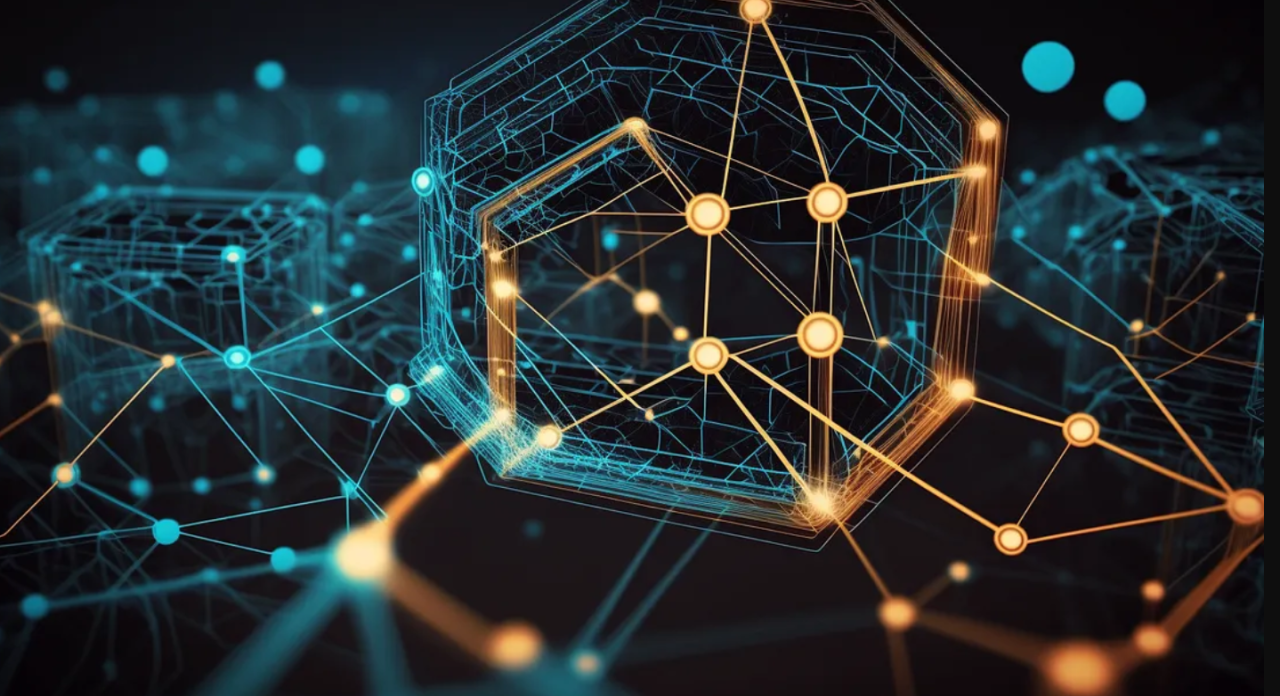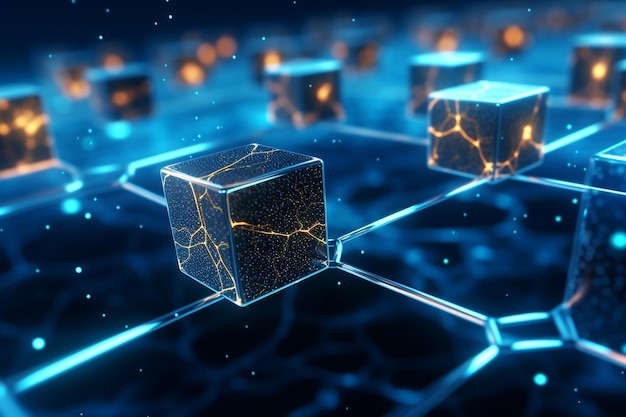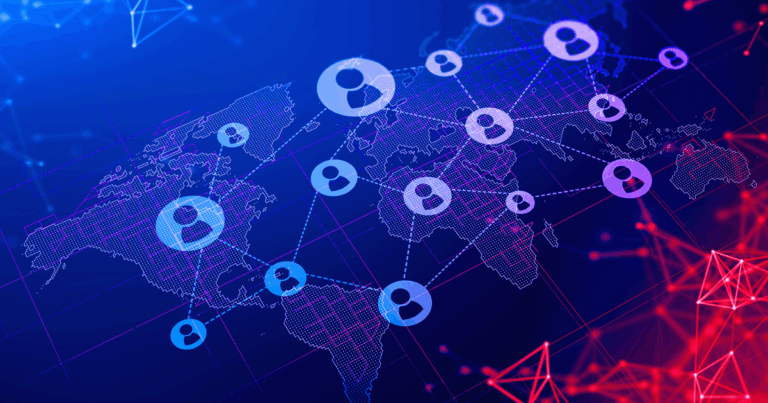The digital world is undergoing a profound metamorphosis, shifting away from centralized control towards a more distributed, transparent, and user-centric paradigm. This revolution is powered by decentralized technologies, a broad category of innovations that leverage peer-to-peer networks and cryptographic principles to eliminate the need for intermediaries. From the foundational concept of blockchain to the burgeoning fields of decentralized finance (DeFi), non-fungible tokens (NFTs), and the ambitious vision of Web3, these technologies are fundamentally reshaping how we manage data, conduct transactions, and interact online. This article provides an extensive look into the phenomenon of decentralized tech, exploring its core principles, key components, transformative applications across various sectors, and the significant challenges and immense opportunities that define its explosive growth.
The Essence of Decentralized Technologies

At its heart, decentralization refers to the distribution of power and control away from a central authority. In the context of technology, this means systems where no single entity dictates operations, data storage, or decision-making.
A. Blockchain Technology: The foundational layer for much of decentralized tech, a blockchain is a distributed, immutable ledger that records transactions across a network of computers.
A. Distributed Ledger Technology (DLT): Blockchain is a type of DLT, meaning that the ledger is replicated and synchronized across multiple nodes in a network, making it highly resilient to single points of failure.
B. Immutability: Once a transaction or data block is added to the blockchain, it cannot be altered or deleted, ensuring data integrity and transparency.
C. Cryptography: Cryptographic hashes link blocks together, and digital signatures secure transactions, providing strong security and verification.
D. Consensus Mechanisms: Protocols like Proof-of-Work (PoW) and Proof-of-Stake (PoS) enable network participants to agree on the validity of transactions and the state of the ledger without a central arbiter.
B. Peer-to-Peer (P2P) Networks: These networks allow participants (peers) to directly interact with each other without going through a central server. This architecture is crucial for the resilience and censorship resistance of decentralized systems.
A. Distributed Storage: Data is stored across multiple nodes, reducing the risk of data loss due to a single server failure and enhancing censorship resistance.
B. Direct Communication: Users can communicate and transact directly, fostering greater autonomy and efficiency.
C. Smart Contracts: Self-executing contracts with the terms of the agreement directly written into lines of code. They run on a blockchain, automatically executing when predefined conditions are met.
A. Automation: Eliminates the need for intermediaries, automating agreements and reducing human error.
B. Trustlessness: Once deployed, smart contracts operate exactly as programmed, providing a high degree of trust without relying on third parties.
C. Applications: Essential for DeFi, NFTs, and decentralized autonomous organizations (DAOs).
The Core Principles Driving Decentralization
The appeal and power of decentralized technologies stem from several fundamental principles they embody:
A. Censorship Resistance: By distributing data and control across a network, it becomes extremely difficult for any single entity (government, corporation) to suppress information or transactions. There’s no single “off switch.”
B. Transparency: Most decentralized ledgers are public and verifiable, allowing anyone to audit transactions and data. This fosters trust and reduces opportunities for fraud or manipulation. However, it’s important to distinguish between transactional transparency (public ledger) and user anonymity (pseudonymity).
C. Security: Cryptographic techniques ensure data integrity and transaction authenticity. The distributed nature makes the system highly resistant to attacks, as an attacker would need to compromise a majority of the network’s nodes.
D. Trustlessness: Participants can interact and transact without needing to trust a central authority. Trust is built into the protocol and cryptography rather than relying on intermediaries.
E. Immutability: Once data is recorded on a decentralized ledger, it’s extremely difficult, if not impossible, to alter or remove it. This creates a permanent and verifiable record.
F. User Ownership and Control: Decentralized systems aim to return control of data, identity, and assets to individual users, moving away from models where large corporations own user data.
The Historical Evolution

The journey of decentralized technology is relatively short but marked by rapid and significant advancements.
A. Bitcoin: The Genesis (2008-2009): The publication of Satoshi Nakamoto’s whitepaper “Bitcoin: A Peer-to-Peer Electronic Cash System” and the launch of its network introduced the world to the first successful decentralized digital currency. Bitcoin demonstrated the viability of a trustless, immutable ledger for financial transactions, laying the groundwork for all subsequent decentralized innovations.
B. Ethereum and Smart Contracts (2014-2015): Vitalik Buterin proposed Ethereum, a blockchain platform designed not just for cryptocurrency but also for running smart contracts and decentralized applications (dApps). This was a crucial leap, transforming blockchain from a mere payment rail into a programmable platform for building complex, automated systems.
C. The Rise of ICOs and Early dApps (2016-2017): The programmable nature of Ethereum led to a boom in Initial Coin Offerings (ICOs), where projects raised capital by issuing new tokens. This period saw the emergence of various decentralized applications, albeit many were experimental and lacked widespread adoption.
D. Decentralized Finance (DeFi) Explosion (2019-Present): DeFi emerged as a major use case for blockchain, recreating traditional financial services (lending, borrowing, trading, insurance) on decentralized networks without central banks or financial institutions. This period saw rapid innovation in yield farming, liquidity pools, and decentralized exchanges (DEXs).
E. Non-Fungible Tokens (NFTs) Gain Mainstream Attention (2020-Present): NFTs, unique digital assets verifiable on a blockchain, exploded in popularity, particularly in the art, gaming, and collectibles sectors. They demonstrated the power of blockchain to establish digital ownership and scarcity for intangible items.
F. The Web3 Movement (Ongoing): Web3 represents the next generation of the internet, aiming to build a decentralized web where users have greater control over their data and identity. It envisions a internet built on blockchain, smart contracts, and decentralized protocols, moving beyond the current “Web2” model dominated by large tech companies.
Transformative Applications of Decentralized Tech
Decentralized technologies are not just theoretical concepts; they are actively being applied to solve real-world problems and create new paradigms across numerous sectors.
A. Decentralized Finance (DeFi): Recreating financial services without intermediaries.
A. Lending and Borrowing: Platforms like Aave and Compound allow users to lend crypto assets to earn interest or borrow by providing collateral, all governed by smart contracts.
B. Decentralized Exchanges (DEXs): Platforms like Uniswap and SushiSwap enable direct peer-to-peer cryptocurrency trading without a central custodian, reducing counterparty risk.
C. Stablecoins: Cryptocurrencies pegged to stable assets (like the US Dollar) to reduce volatility, crucial for DeFi transactions.
D. Insurance: Decentralized insurance protocols offer coverage against smart contract risks or other events.
B. Non-Fungible Tokens (NFTs): Unique digital assets whose ownership is verified on a blockchain.
A. Digital Art and Collectibles: Enabling digital artists to prove scarcity and ownership of their work, creating a new market for digital art.
B. Gaming: Providing true ownership of in-game assets, allowing players to buy, sell, and trade unique items across different games or platforms.
C. Ticketing: Combating ticket fraud by creating verifiable, non-transferable (or securely transferable) digital tickets.
D. Identity and Credentials: Potential for self-sovereign digital identities and verifiable academic degrees or certifications.
C. Web3 and Decentralized Internet: Building a more open, user-owned internet.
A. Decentralized Social Media: Platforms aiming to give users control over their data and content, free from censorship by a central platform (e.g., Lens Protocol, Farcaster).
B. Decentralized Storage: Services like Filecoin and Arweave offer decentralized data storage, increasing resilience and reducing reliance on cloud monopolies.
C. Decentralized Identifiers (DIDs): Empowering users with self-sovereign control over their digital identity, allowing them to choose what personal information to share and with whom.
D. Creator Economy: Providing creators with more direct monetization opportunities and control over their content, bypassing traditional platforms.
D. Supply Chain Management: Enhancing transparency and traceability.
A. Provenance Tracking: Recording every step of a product’s journey on a blockchain, from raw materials to consumer, proving authenticity and ethical sourcing.
B. Inventory Management: Real-time tracking of goods, reducing errors and improving efficiency.
C. Fraud Prevention: Making it harder to introduce counterfeit goods into the supply chain.
E. Voting Systems: Increasing transparency and security in elections.
A. Tamper-Proof Records: Each vote is recorded on an immutable ledger, making it difficult to alter or delete.
B. Verifiability: Allowing voters to independently verify their vote was counted correctly without compromising their anonymity.
F. Digital Identity and Authentication: Giving individuals control over their personal data.
A. Self-Sovereign Identity (SSI): Users own and control their digital identities, granting access to specific attributes without relying on central identity providers.
B. Reduced Fraud: More secure authentication methods reduce identity theft and online fraud.
Challenges and Hurdles for Decentralized Tech
Despite its explosive growth and promising applications, decentralized technology faces significant challenges that need to be addressed for mainstream adoption.
A. Scalability: Many decentralized networks, particularly older blockchains, struggle with transaction speed and throughput, limiting their ability to handle a large number of users simultaneously.
A. Layer 2 Solutions: Innovations like Lightning Network (Bitcoin) and rollups (Ethereum) aim to improve scalability by processing transactions off the main chain.
B. New Consensus Mechanisms: Exploring alternatives to PoW and PoS that offer higher transaction speeds while maintaining security.
B. Usability and User Experience (UX): Decentralized applications often have steep learning curves, complex interfaces, and require users to manage private keys, which can be daunting for non-technical individuals.
A. Simplifying Wallets: Developing more intuitive and secure crypto wallet solutions.
B. Abstracting Complexity: Hiding the underlying blockchain complexities from the end-user.
C. Improved Onboarding: Easier ways for new users to get started with decentralized applications.
C. Security Risks and Vulnerabilities: While the underlying blockchain technology is generally secure, smart contracts, dApps, and associated protocols can have bugs or vulnerabilities.
A. Smart Contract Audits: The need for rigorous security audits of smart contracts before deployment.
B. User Error: Users losing private keys or falling victim to phishing scams remains a significant risk.
C. Rug Pulls and Scams: The decentralized nature can make it easier for malicious actors to launch fraudulent projects and disappear with funds.
D. Regulatory Uncertainty: Governments worldwide are grappling with how to regulate decentralized technologies, leading to a patchwork of laws and a lack of clear guidance.
A. Consumer Protection: Balancing innovation with the need to protect consumers from financial risks.
B. Anti-Money Laundering (AML) and Know Your Customer (KYC): Applying traditional financial regulations to decentralized, often pseudonymous, systems.
C. Taxation: Clarity on how crypto assets and DeFi activities are taxed.
E. Environmental Concerns: The energy consumption of some proof-of-work blockchains (like Bitcoin) raises environmental concerns, though newer, more energy-efficient consensus mechanisms are gaining traction.
A. Shift to Proof-of-Stake: Ethereum’s transition to PoS significantly reduced its energy footprint.
B. Renewable Energy Integration: Efforts to power mining operations with renewable energy sources.
F. Interoperability: Different blockchain networks often operate in silos, making it difficult to transfer assets or data between them.
A. Cross-Chain Bridges: Technologies that enable assets to move between different blockchains.
B. Standardization: Efforts to create common standards for tokens, smart contracts, and data formats across chains.
The Future Outlook for Decentralized Technologies
The trajectory for decentralized tech is one of continued rapid evolution and increasing integration into mainstream society.
A. Mainstream Adoption: As usability improves and regulatory clarity emerges, we can expect to see decentralized applications and services adopted by a much wider audience, moving beyond early adopters.
B. Convergence with AI: The combination of decentralized data (ensuring data ownership and privacy) with AI (for analysis and insights) will unlock powerful new applications, particularly in areas like personalized medicine, secure data marketplaces, and decentralized autonomous agents.
C. Modular Blockchain Architectures: The trend towards “app-specific chains” and modular blockchains (where different layers handle different functions like execution, settlement, data availability) will improve scalability and flexibility.
D. Real-World Asset Tokenization: More real-world assets (real estate, commodities, intellectual property) will be tokenized on blockchains, making them more liquid and accessible for fractional ownership.
E. Decentralized Autonomous Organizations (DAOs) Maturity: DAOs will evolve from experimental governance structures to more sophisticated and efficient models for coordinating human and automated activities, potentially challenging traditional corporate structures.
F. Enhanced Privacy Solutions: Development of zero-knowledge proofs (ZKPs) and other privacy-preserving technologies will allow for verifiable transactions and data sharing without revealing underlying sensitive information, addressing a critical need for enterprise adoption.
Conclusion
The “explosion” of decentralized tech is not a fleeting trend but a fundamental shift towards a more resilient, transparent, and user-empowered digital future. From the invention of Bitcoin to the complex ecosystems of DeFi, NFTs, and the ambitious vision of Web3, these technologies are systematically dismantling centralized paradigms across finance, internet infrastructure, identity, and beyond. While significant hurdles in scalability, usability, security, and regulation remain, the relentless pace of innovation, coupled with growing investment and public interest, suggests that decentralized technologies are poised for even greater impact. They promise to redefine ownership, trust, and interaction in the digital age, moving us closer to an internet where control is truly distributed, and value accrues to the many, not just the few. The journey of decentralization is well underway, and its ongoing evolution is set to reshape our world in profound and exciting ways.




